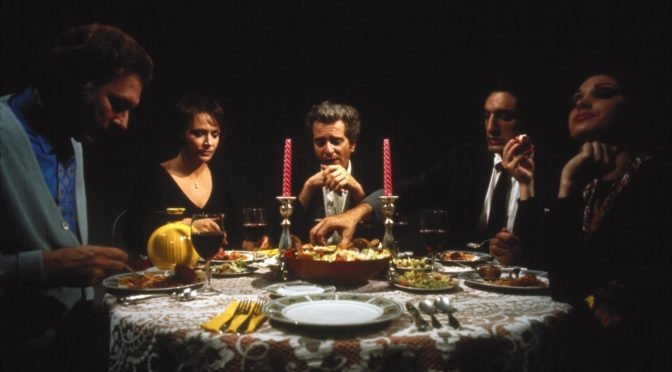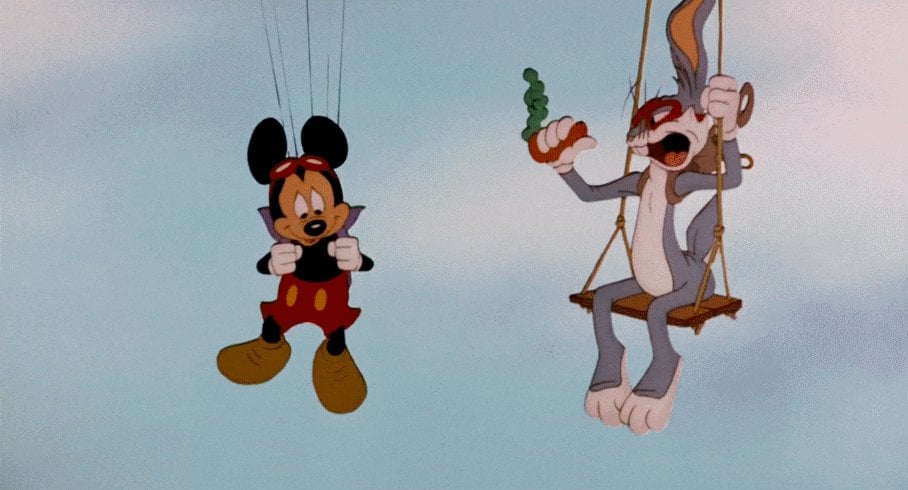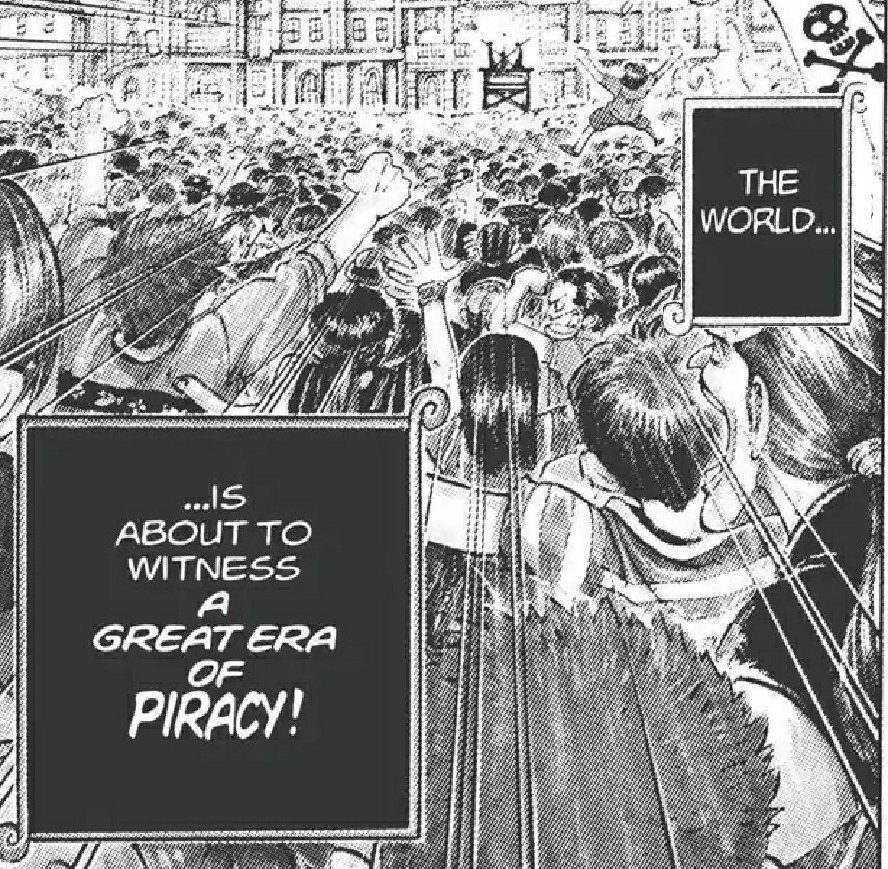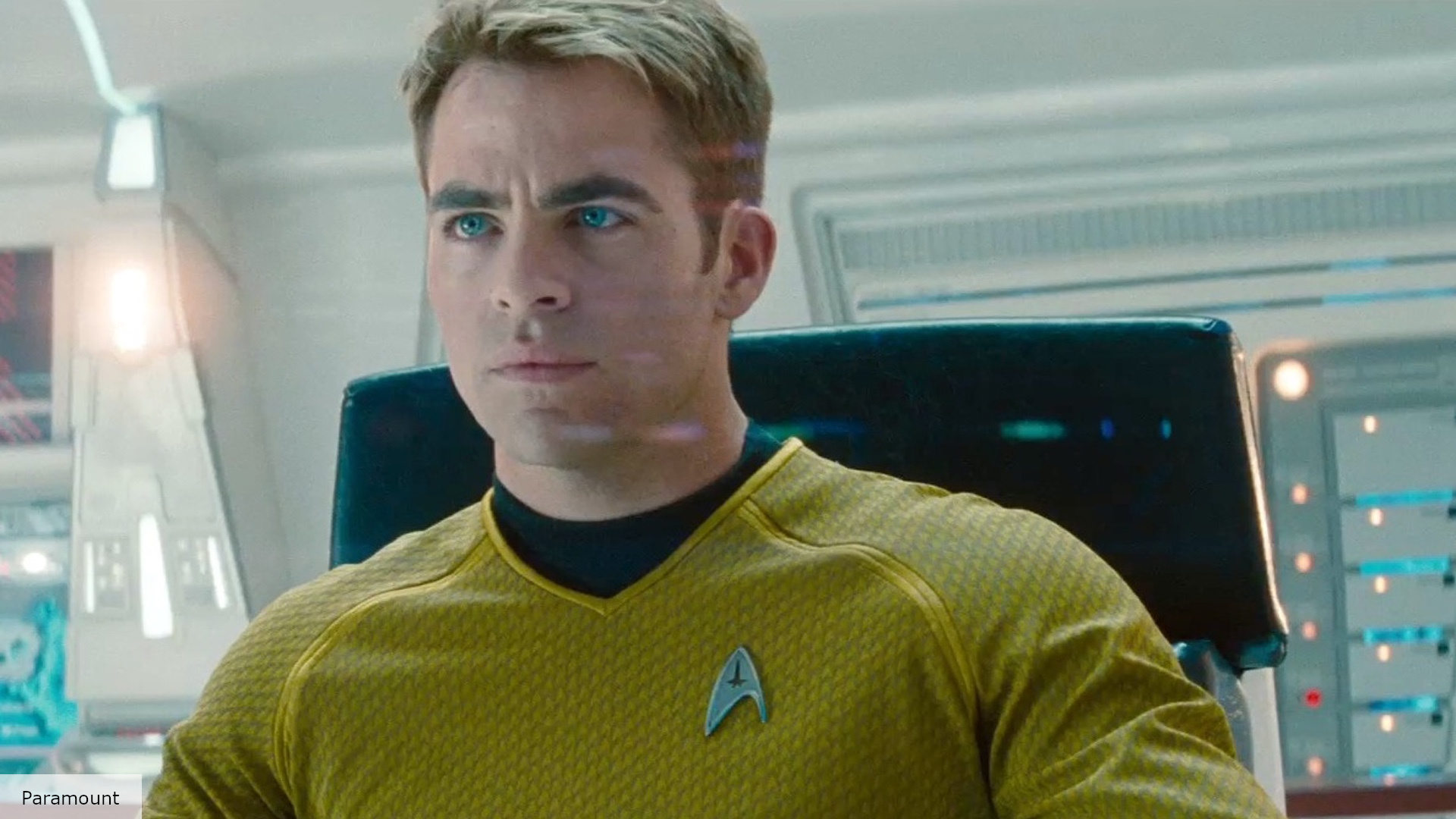“I don’t want you girls to worry. We just wanted some company, you know?”
I’ll be honest, after last night’s Friday the 13th debacle, the last thing I wanted to do was watch another goddamn old horror movie. I wasn’t ready for what I assumed would be paper-thin characterizations and wooden acting. I didn’t need to worry, though, because I had forgotten something very important: Wes Craven is a much better director than Friday‘s Sean S. Cunningham (who, strangely enough, is listed as a producer here). The Last House on the Left is a profoundly unpleasant film, one that remains, at times, excruciatingly hard to watch after more than forty years. Not everything holds up after all this time, but it’s easy to watch this and see why it’s considered a classic, as well as one of the most controversial films ever made.
The film is structured like an urban legend. Mari Collingwood (Sandra Peabody, credited as Sandra Cassell) and her friend Phyllis Stone (Lucy Grantham) want to go into town to see a band called Bloodlust (“I wonder what it would be like to make it with Bloodlust,” Phyllis muses, and if you change it so that word has a lowercase b it becomes a chilling portent of things to come). While trying to buy weed, they find themselves locked in an apartment with a gang of depraved criminals. Stop me if you’ve heard this one, you can imagine Craven saying, before continuing: I promise you haven’t.
Craven doesn’t even try to make the criminals sympathetic or even human. There’s Krug (David Hess, who looks like a greasy Al Pacino), Weasel (Fred Lincoln), Sadie (Jeramie Rain), and Krug’s son Junior (Marc Sheffler). They’re all scary in their own way, but Sadie might be the worst. Her request to have “some more chicks around” leads to the girls’ abduction, and there’s something terrifying nihilistic about a woman being complicit in the brutalization of other women.
Going in to The Last House on the Left, I was aware of a few aspects of it, most notably its supposedly graphic violence and rape. We see Krug forcing himself on Phyllis, and then the film cuts to the next morning. “That wasn’t so bad,” I thought. “Maybe the film has just been overhyped through the years.” I was very, very wrong. Even for viewers with strong stomachs, and I consider myself one of them, the violence in Last House is rough. Deep in the woods, Krug forces Mari and Phyllis to perform increasingly humiliating tasks, ordering Phyllis to wet her pants before making the two have sex, Mari crying the whole time. The crying is one thing that sets Last House apart from most horror films. The girls don’t scream – they weep, they beg, they crawl, and they try to reason, and none of it works. This film was revolutionary in its day for depicting utterly human horror. There are no demons or monsters or ghouls here, just people who don’t care about other people. After killing Phyllis, one of the gang members starts pulling her intestine out, out of what looks to be sheer curiosity.
It’s in its third act that The Last House on the Left takes a terrific turn. When the gang, whose car has broken down, finds themselves in the Collingwoods’ house, they don’t count on Estelle Collingwood (Cynthia Carr) overhearing them talk about killing Mari (in a ghoulish twist, they’re actually in Mari’s bedroom). There’s a very famous revenge sequence that threatens to take Last House out of the horror genre, and into the rape-revenge exploitation genre, where it would have languished alongside such dubious classics as I Spit on Your Grave. But Craven, making his debut here, isn’t interested in catharsis. The Collingwoods kill the gang (except for Junior, who kills himself at his father’s urging), but the toll it takes on them is immediately evident. Look at John Collingwood’s (Richard Towers, credited as Gaylord St. James) eyes when he pursues Krug with a chainsaw: dead but determined. After all is said and done, they don’t look triumphant, they look exhausted, and even a bit defeated. They know the victory is Pyrrhic. Their daughter is dead.
For as much as Last House gets right, though, there are two major things it gets wrong. The first is the jaunty music, scored by Krug himself, David Hess. It’s the kind of banjo and guitar-driven Americana that sounds as though Hess raided Levon Helm’s cassette collection, and it is wildly out of place in a horror film. The second thing is the two goddamn bumbling-ass cops (played by Marshall Anker and Martin Kove), who might have been intended as comic relief, but only serve to derail whatever scene they’re in (Craven’s sense of humor would become better defined by the time he made Scream, but here it amounts to little more than people falling down). These are the aspects of the film that make it seem the most dated, but they don’t ruin Last House by any means (although they might make it harder to re-watch).
Thankfully, neither of those elements are present in the 2009 remake of the film, directed by Dennis Iliadis. His version of Last House is in many ways a leaner film, even if it’s a half hour longer, and as far as horror remakes go, it’s one of the better ones.
Iliadis makes a lot of smart choices here. The first is actually showing Krug’s escape from police custody. It helps establish his bona fides as a criminal, as well as his ruthlessness and sadism – he makes one of the cops look at a picture of his daughter before strangling the man. One of the potential benefits of a remake is the possibility of new actors, and this is where Last House rises above the original. Garrret Dillahunt takes over the role of Krug, playing him less as a sleazy sadist and more animalistic and instinctual. Riki Lindhome turns in a vicious, near-demonic performance as Sadie, which is doubly impressive when you consider most of Lindhome’s background is in musical comedy (she’s a trooper, too, performing her final fight scene in nothing but briefs). Spencer Treat Clark plays Justin as bland and sensitive, but he’s a better-drawn and more sympathetic character than Junior in the original. One of the better changes that Last House makes to the story is that Justin survives until the end. And Aaron Paul has the time of his life playing Frank (Weasel in the last film). Paul brings none of the complexity or humanity that won him a few Emmys for Breaking Bad, but that’s because Frank doesn’t require it. He’s a libido-driven id, encouraging and perpetuating Krug’s violence.
About the violence – The Last House on the Left is in a unique position for a remake. Somehow the violence is grisly but also tamer; it’s graphic, but it doesn’t wallow in depravity like Craven’s original. Iliadis has a keener eye than did Craven, though; when Krug rapes Mary (Sara Paxton), it’s shot in an extreme close-up, the only sound diegetic screams and grunts. He doesn’t let the viewer off the hook.
There’s one big change in the 2009 version of the film, one I wasn’t sure would work, but does: Mary lives. When I saw this I thought the film was going to be toothless in the end, but it serves to change the nature of the violence that takes up the climax. Instead of being purely vengeance-driven, it’s preventative, as John and Emma Collingwood (Tony Goldwyn and Monica Potter) have to get Mary to a hospital. The attack on Krug’s gang stays true to the grisly nature of the original, and at times surpasses it. Frank gets drowned in a sink, his hand fed into the garbage disposal, and then gets the claw end of a hammer embedded in his head. And he’s not even the main villain!
Iliadis’s version of The Last House on the Left will most likely be remembered for its absolutely bonkers final shot, which rivals Edge of Darkness for sheer what-the-fuckery (have you guys seen that? Mel Gibson makes Danny Huston drink radioactive milk). It’s cartoonish and garish in a way that doesn’t quite fit with the rest of the film, but whatever, man, I have to applaud a movie that ends with the bad guy paralyzed and getting his head exploded in a microwave.
The Last House on the Left was more ripe than other films for a remake, if for no other reason than to excise the goofy cops and out-of-place music. The remake doesn’t shock the way the original does, but the performances are better, and the film itself is more focused. Both versions have their flaws, but it’s easy to see why this is a standout of the genre.
10/1: Dawn of the Dead (2004)
10/2: The Exorcist
10/3: Pontypool
10/4: Hocus Pocus
10/5: The Orphanage
10/6: Rosemary’s Baby
10/7: Alien
10/8: Scream series
10/9: Scream series
10/10: Cujo
10/11: The Cabin in the Woods
10/12: Pulse
10/13: The Babadook
10/14: Friday the 13th
10/15: The Last House on the Left (both versions)
10/16: The Thing (both versions)
10/17: Little Shop of Horrors
10/18: Hush
10/19: Silent Hill
10/20: The Shining
10/21: Funny Games (2007)
10/22: Evil Dead series
10/23: Evil Dead series
10/24: The Mist
10/25: The Ninth Gate
10/26: The Fly
10/27: A Nightmare on Elm Street
10/28: The Nightmare Before Christmas
10/29: 28 Days Later/28 Weeks Later
10/30: It
10/31: Halloween (either version)












